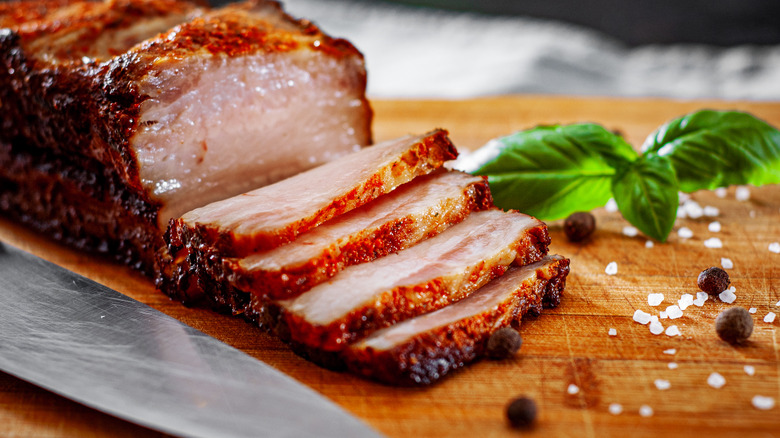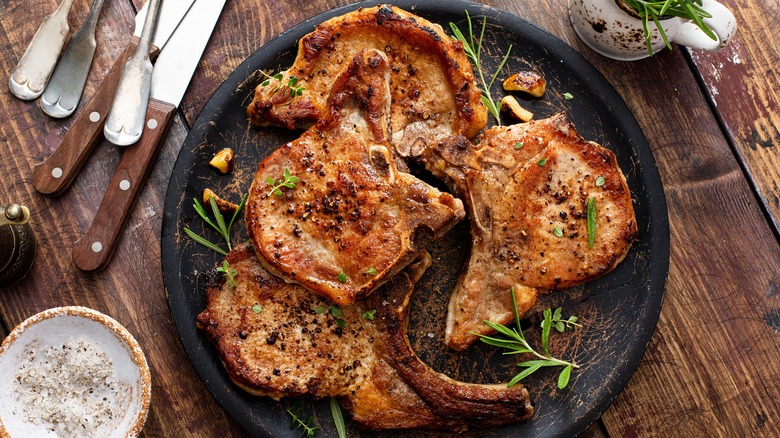Keep The Fat On Pork And Season It Well For Flavorful And Crispy Bites
Especially when preparing large cuts of pork, all the varying elements of the meat may feel intimidating. From skin to bone and fat, knowing what to keep and how to use it can strongly impact the result. When it comes to pork fat, rest easy; there's no reason to remove the delicious stuff.
It's no coincidence that bacon is always in fashion, and lard is one of the most popular animal fats. Pork fat is blessed with a palatable taste and easily-melted consistency, which amplifies most cuts. So don't trim it off your chops, bacon, shoulder, or any other cuts; leaving the fat on will create a far better result for a multitude of reasons.
In relation to other meats, pork fat has a greater effect on the tenderness and juiciness of a bite. Exterior fat traps moisture, giving the meat a greater melt-in-your-mouth quality. Additionally, pork fat has a great flavor, which is even better when it crisps up under high heat; all the more reason to leave it in. It all just necessitates a few thoughtful considerations; let's dive into the details.
Season and properly prepare pork fat for a delicious result
With so many cuts of pork, the exact approach to cooking the fat depends on how it's positioned. Marbled fatty cuts like pork belly shine when cooked slowly at a low temperature. On the other hand, when the fat's positioned on the outside — like on a pork chop — it's best seared at a high temperature to create a crispy result. Just take extra care in scoring the fat with a knife so that its shrinkage affects the final shape less. And don't forget to rest your meat once it's cooked for 10-15 minutes, to make sure all the moisture redistributes through the meat. In fact, exterior pork fat has such delicious culinary qualities that, when it's in the form of caul fat, pork lard can be wrapped around other cuts for both texture and added bacony flavor. Bacon, too, is great for wrapping around poultry and other roasts to add flavor and hold in moisture.
And no matter the fat orientation, make sure to season the fat well early in the cooking process to get maximum flavor. Follow this guidance, and the extra fat will never detract from a dish.

